
Roots
Consider the subtle, often unspoken language of hair, a language that speaks volumes about heritage, identity, and belonging. For centuries, across diverse cultures, hair has served as a profound marker, carrying stories of lineage, spiritual connection, and communal strength. Yet, as European influence stretched across continents, a discordant note entered this rich symphony of strands.
A singular aesthetic, born of a specific climate and cultural lineage, began to cast a long shadow, reshaping how the world viewed textures that did not mirror its smooth, flowing ideals. This quiet imposition began to alter the very understanding of what hair could be, challenging ancient wisdom with a novel, narrow definition of beauty.

Hair’s Original Language
Before the pervasive reach of European beauty tenets, numerous societies celebrated hair in its natural state, a testament to the diverse expressions of human genetic heritage. Indigenous African cultures, for instance, saw hair not merely as an adornment, but as a spiritual antenna, a connection to the divine, or a symbol of status and tribal affiliation. Intricate braiding patterns conveyed marital status, age, or readiness for battle.
The act of hair dressing itself was a communal ritual, a moment of intergenerational teaching and bonding. This deep reverence for hair as an extension of self and community stood in stark contrast to the emerging European perspective, which often viewed anything deviating from straight or loosely wavy textures as unkempt, unruly, or even uncivilized.
Across many pre-colonial societies, hair was a vibrant lexicon of identity and spiritual connection, a stark contrast to the singular aesthetic that would later prevail.

Anatomy’s Whisper
At a biological level, textured hair, particularly the tightly coiled patterns often seen in individuals of African descent, possesses a distinct anatomy. The hair follicle itself is often elliptical or flattened, rather than round, causing the hair shaft to grow in a helical, spiral, or zigzag formation. This unique structure influences how light reflects off the strand, how moisture is retained, and how the hair behaves. For generations, the absence of this understanding within dominant European beauty discourse led to mischaracterizations.
When a standard was set by hair that grew from a round follicle, with a smooth cuticle and an even distribution of oils, the inherent characteristics of textured hair were often pathologized. The natural tendency of coils to defy gravity, to spring upwards, or to shrink when wet was not seen as a beautiful expression of its unique form, but as a problem to be corrected.
The emphasis on straightness, often equated with neatness and professionalism, began to alter the very vocabulary used to describe hair. Terms that once celebrated volume and curl were slowly replaced by those that favored sleekness and length. This shift in language reflected a deeper shift in perception, where the inherent qualities of textured hair were framed as deficiencies rather than distinct attributes.

How Did Early Encounters Alter Hair Perception?
The earliest colonial encounters often involved a clash of visual cultures, where European explorers and settlers imposed their aesthetic judgments upon the people and customs they encountered. Hair, being a prominent and visible aspect of identity, became a significant point of contention. The natural, varied textures of indigenous populations were frequently described in derogatory terms, contrasting sharply with the European ideal of smooth, flowing locks.
This early linguistic and visual subjugation laid the groundwork for a hierarchy of hair, where proximity to the European aesthetic became a measure of acceptability and, disturbingly, even humanity. This perception was not just about aesthetics; it was deeply intertwined with systems of power, control, and racial classification.
The consequence was a gradual, yet profound, internalization of these external judgments. Over generations, for many individuals with textured hair, the idea of their natural hair being “good” or “beautiful” became inextricably linked to its ability to conform to a non-native standard. This created a profound disconnect from ancestral practices and an often painful pursuit of an unattainable ideal.
| Cultural Origin Pre-Colonial African Societies |
| Dominant Hair Aesthetic Diverse, often voluminous, intricately styled, celebrated natural texture |
| Perception of Textured Hair Symbol of status, spirituality, beauty, community connection |
| Cultural Origin 17th-19th Century Europe |
| Dominant Hair Aesthetic Straight, wavy, long, smooth, often powdered or formally styled |
| Perception of Textured Hair Often viewed as unruly, unkempt, primitive, or less desirable |
| Cultural Origin Colonial Era & Beyond |
| Dominant Hair Aesthetic Straight hair as the beauty standard |
| Perception of Textured Hair Associated with lower status, lack of professionalism, or inferiority |
| Cultural Origin The clash of aesthetics profoundly shaped global perceptions of hair. |

Ritual
The whispers of history often echo in our daily routines. Consider the quiet moments before a mirror, the products chosen, the techniques applied. These actions, seemingly simple, are often steeped in a complex heritage, a legacy where the pursuit of beauty was, for many, a delicate dance with conformity. When European beauty standards began to dominate, they didn’t just alter ideals; they transformed practices.
For those with textured hair, the morning ritual could become a battleground, a silent negotiation between inherent nature and imposed expectation. This section steps into that space, where hands-on practices tell a story of adaptation, aspiration, and, eventually, a quiet reawakening.

The Pursuit of Altered Textures
The desire to align with prevailing beauty norms led to the widespread adoption of methods designed to chemically or thermally alter textured hair. The invention of the chemical relaxer, for instance, marked a significant moment in this story. Originally developed in the late 19th and early 20th centuries, these potent chemical concoctions promised to permanently straighten coiled strands, offering a perceived gateway to acceptance and social mobility. The application of these products became a regular, sometimes painful, ritual for millions, reflecting a societal pressure to conform to a standard that did not recognize natural coil patterns as beautiful or professional.
This was not merely about personal preference; it was often about survival. In a world where opportunities, both social and economic, were often implicitly tied to appearance, altering one’s hair became a means to navigate systemic barriers. The chemical process, with its associated scalp burns and long-term hair damage, underscored the immense pressure individuals faced to assimilate.
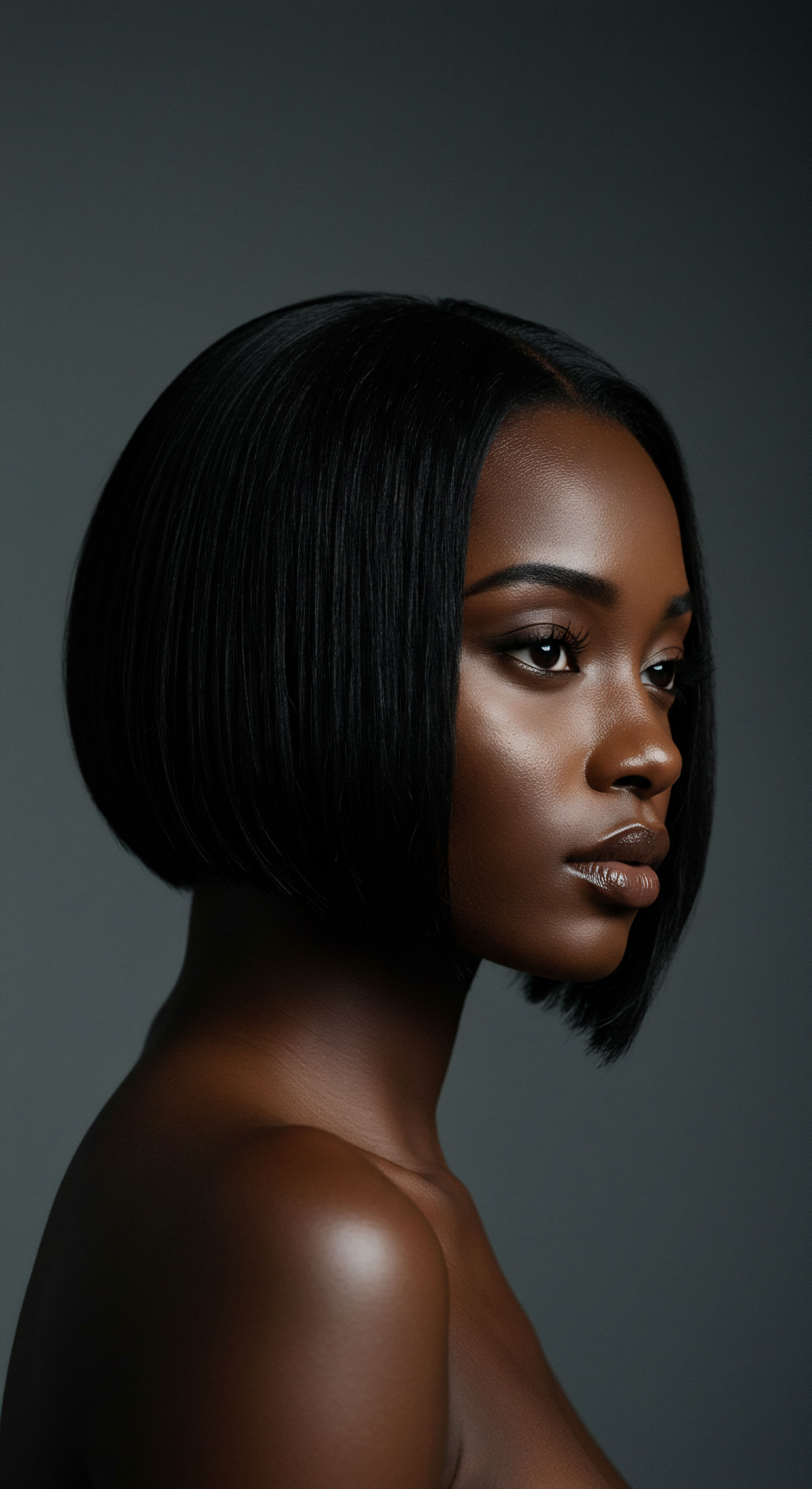
Tools of Transformation
Beyond chemical treatments, various tools became commonplace in the pursuit of straightened hair. The hot comb, introduced in the late 19th century, offered a temporary solution to achieve a smoother appearance. This metal comb, heated to high temperatures, would glide through hair, temporarily stretching coils into a straighter form.
While less permanent than chemical relaxers, its regular use often led to heat damage, breakage, and thinning over time. These tools, and the techniques associated with them, became deeply ingrained in the beauty practices of many families, passed down through generations as a necessary skill for managing hair in a world that favored a different aesthetic.
Daily hair rituals, shaped by a prevailing European aesthetic, transformed from simple care into a complex dance of alteration and adaptation.
The market for hair products also shifted dramatically, with a proliferation of creams, pomades, and straightening solutions promising to deliver the desired sleekness. Advertising campaigns often reinforced the idea that “good hair” was straight hair, further solidifying the perception that natural textured hair was something to be “fixed” or “managed.” This commercial landscape reflected and perpetuated the beauty hierarchy.
- Chemical Relaxers ❉ Strong alkaline or acidic compounds used to permanently break down hair’s protein bonds, resulting in straight hair.
- Hot Combs ❉ Metal combs heated and passed through hair to temporarily straighten it, often causing heat damage with repeated use.
- Pressing Creams ❉ Products designed to aid in the temporary straightening of hair, often containing heavy oils and waxes.
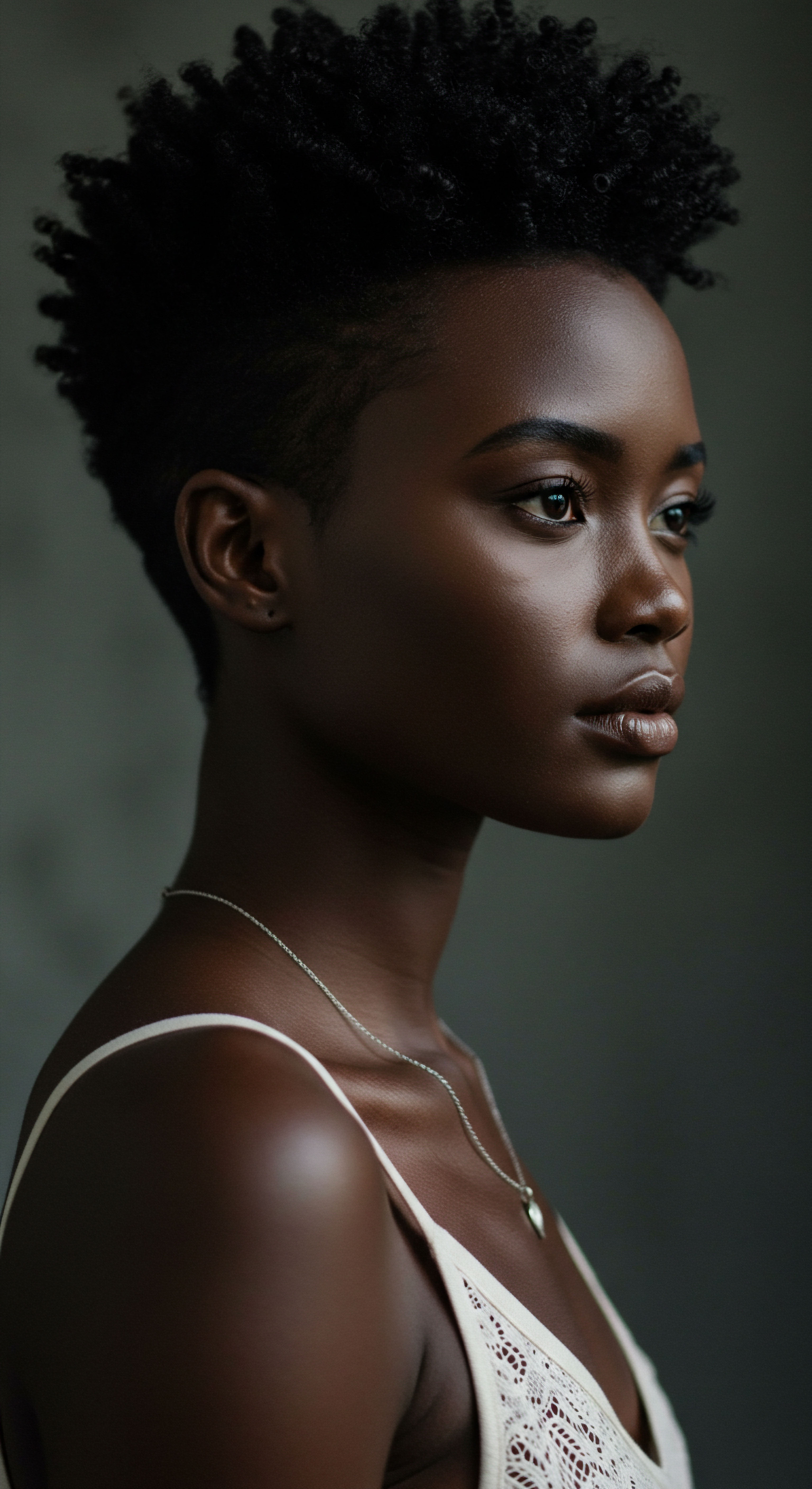
The Gentle Resistance
Despite the pervasive pressure to conform, acts of quiet resistance and self-acceptance always existed. Even during periods when straightened hair was the overwhelming norm, some individuals maintained their natural textures, often within the confines of their homes or close communities. This resistance, though not always overtly political, represented a powerful affirmation of identity and a rejection of imposed standards. The practices of cornrowing, braiding, and twisting, which had deep historical roots, continued to be passed down, often serving as protective styles that allowed hair to thrive outside the constant manipulation of heat and chemicals.

What Practices Helped Preserve Natural Hair?
The preservation of natural hair practices, even in the face of immense societal pressure, often occurred through familial transmission and community solidarity. Grandmothers and mothers taught their children traditional braiding and twisting techniques, often using natural oils and butters for conditioning. These practices were not just about styling; they were about care, protection, and the quiet passing down of cultural knowledge. These methods allowed hair to rest, minimizing exposure to harsh chemicals and excessive heat, thereby preserving its integrity and natural coil pattern.
This often involved creating intricate designs that celebrated the hair’s inherent texture, even if such styles were primarily worn within private spaces or culturally specific gatherings. These acts, seemingly small, laid the groundwork for future movements towards widespread natural hair acceptance.

Relay
As we journey through the layers of perception, we arrive at a space where history’s currents meet contemporary realities, where scientific understanding intersects with deep-seated cultural narratives. How do the echoes of European beauty standards reverberate in our present moment, influencing not just personal choices, but broader societal structures? This section steps into that intricate interplay, exploring the enduring psychological, economic, and social ramifications, drawing upon the less-examined currents of data and experience that truly illuminate the complex tapestry of textured hair perception.
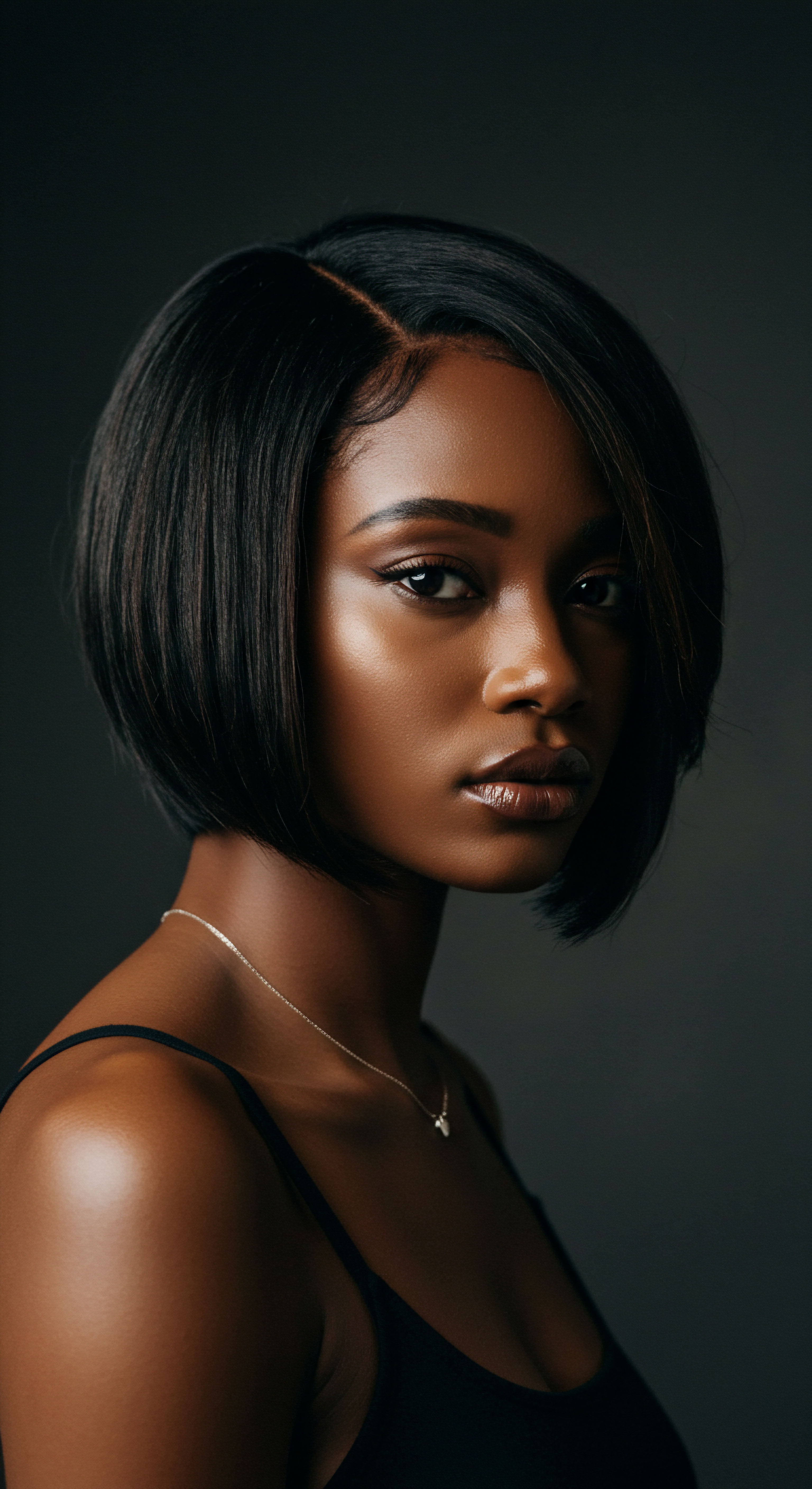
The Coded Crown
Hair, far from being a mere aesthetic choice, became a potent symbol within societal hierarchies shaped by European ideals. For many, particularly Black women, hair texture became a coded crown, signaling either conformity or defiance. Straightened hair was often seen as a prerequisite for entry into certain professional spaces, educational institutions, and even social circles.
This unwritten rule created a psychological burden, where the pursuit of career advancement or social acceptance often came at the cost of personal authenticity and hair health. The subtle, yet pervasive, message was that natural textured hair was unprofessional, unpolished, or somehow less intelligent.
This coding was not accidental; it was a byproduct of systemic biases that conflated European features with universal standards of beauty and competence. The constant negotiation of this visual code could lead to feelings of inadequacy, self-consciousness, and a disconnection from one’s cultural heritage.

Economic Currents
The beauty industry, driven by these pervasive standards, created an economic current that directed significant resources towards products and services designed to alter textured hair. For decades, the market for chemical relaxers, pressing combs, and straightening treatments flourished, representing a multi-billion dollar industry built upon the premise of altering natural textures. This economic model inadvertently reinforced the very standards that marginalized textured hair, creating a cycle where demand for alteration was fueled by societal pressure, which in turn generated profit for companies perpetuating those standards.
The historical imprint of European beauty standards extends beyond aesthetics, shaping economic currents and influencing perceptions of competence and belonging.
However, as consciousness shifts and the natural hair movement gains momentum, these economic currents are beginning to redirect. There is a growing market for products that celebrate and support natural textured hair, indicating a powerful consumer-driven movement towards self-acceptance and cultural affirmation. This shift represents not just a change in buying habits, but a deeper societal re-evaluation of beauty.

Reclaiming Our Own
The ongoing movement to reclaim and celebrate textured hair represents a powerful act of decolonization. It is a conscious rejection of imposed standards and a profound affirmation of inherent beauty. This movement extends beyond individual choice, influencing legislation and corporate policies.
Laws like the CROWN Act (Creating a Respectful and Open World for Natural Hair) in the United States, which prohibits discrimination based on hair texture or protective hairstyles, stand as testaments to the long struggle for hair liberation. These legislative efforts seek to dismantle the institutionalized biases that have historically penalized individuals for wearing their hair in its natural state.
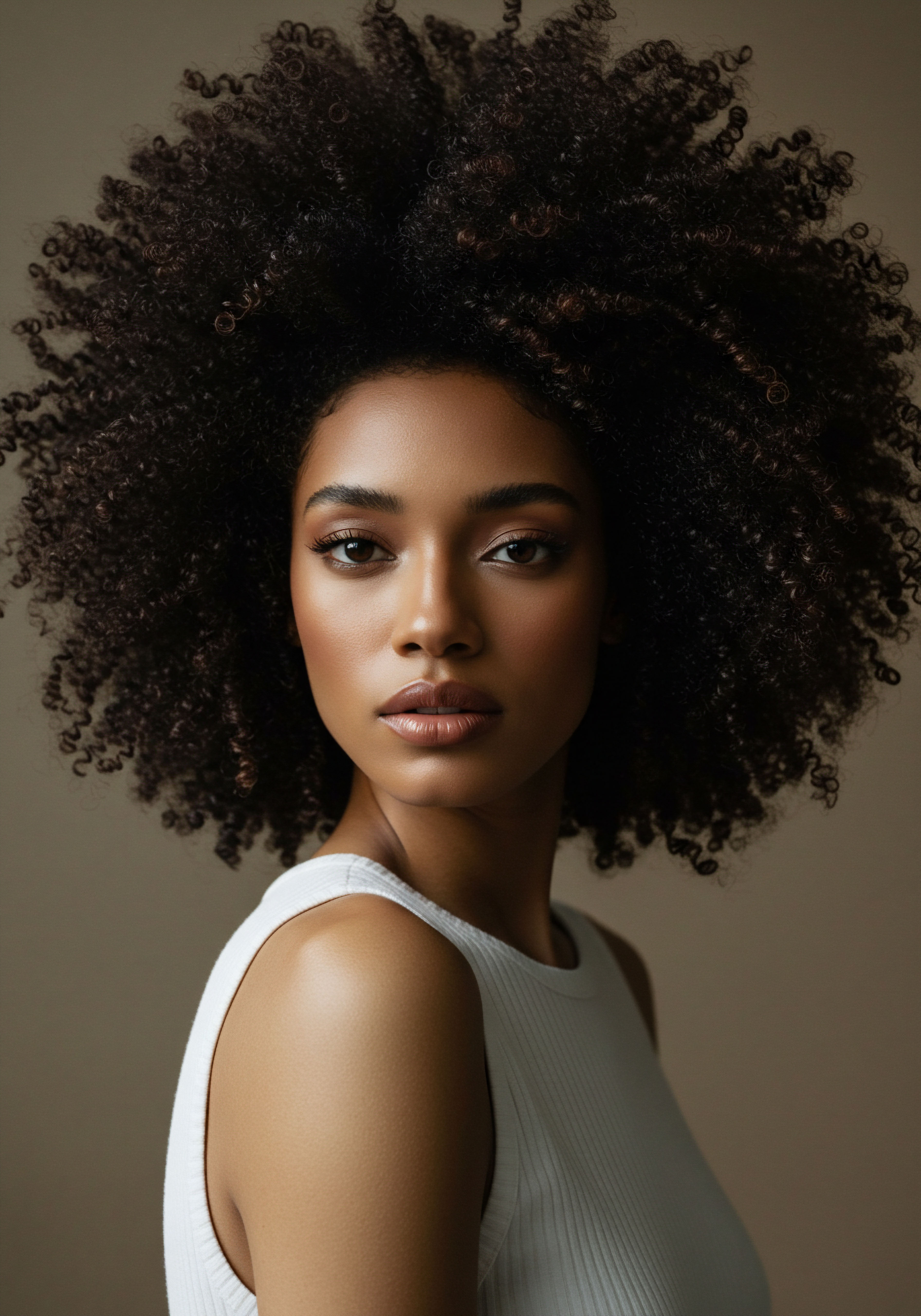
How Does Hair Texture Affect Perceived Professionalism?
Despite strides in acceptance, biases persist. A 2019 study conducted by the Duke University Fuqua School of Business provides a stark illustration of this enduring perception. Researchers found that Black women with natural hairstyles were perceived as less professional and less competent than Black women with straightened hair, particularly in industries where a “conservative” appearance is valued. This study, using a sample of 210 participants from various backgrounds, revealed both explicit and implicit biases.
Participants, regardless of their own racial background, tended to associate natural Black hairstyles with less professionalism and suitability for client-facing roles. This data point underscores the deep-seated nature of these biases, demonstrating that the historical imposition of European beauty standards continues to subtly, yet powerfully, influence perceptions of professionalism and opportunity in contemporary settings. It is a subtle current that impacts hiring decisions, career progression, and the daily experiences of countless individuals.
This research highlights that while conversations about hair acceptance are growing, the work of dismantling deeply ingrained biases is far from complete. It calls for continued education, advocacy, and systemic change to ensure that hair texture is never a barrier to opportunity or respect.
- Legal Protections ❉ The CROWN Act and similar legislation aim to prevent discrimination based on natural hair in workplaces and schools.
- Media Portrayal ❉ Increasing visibility of diverse textured hair in mainstream media challenges traditional beauty norms.
- Educational Initiatives ❉ Programs promoting understanding and acceptance of all hair types are growing in schools and communities.
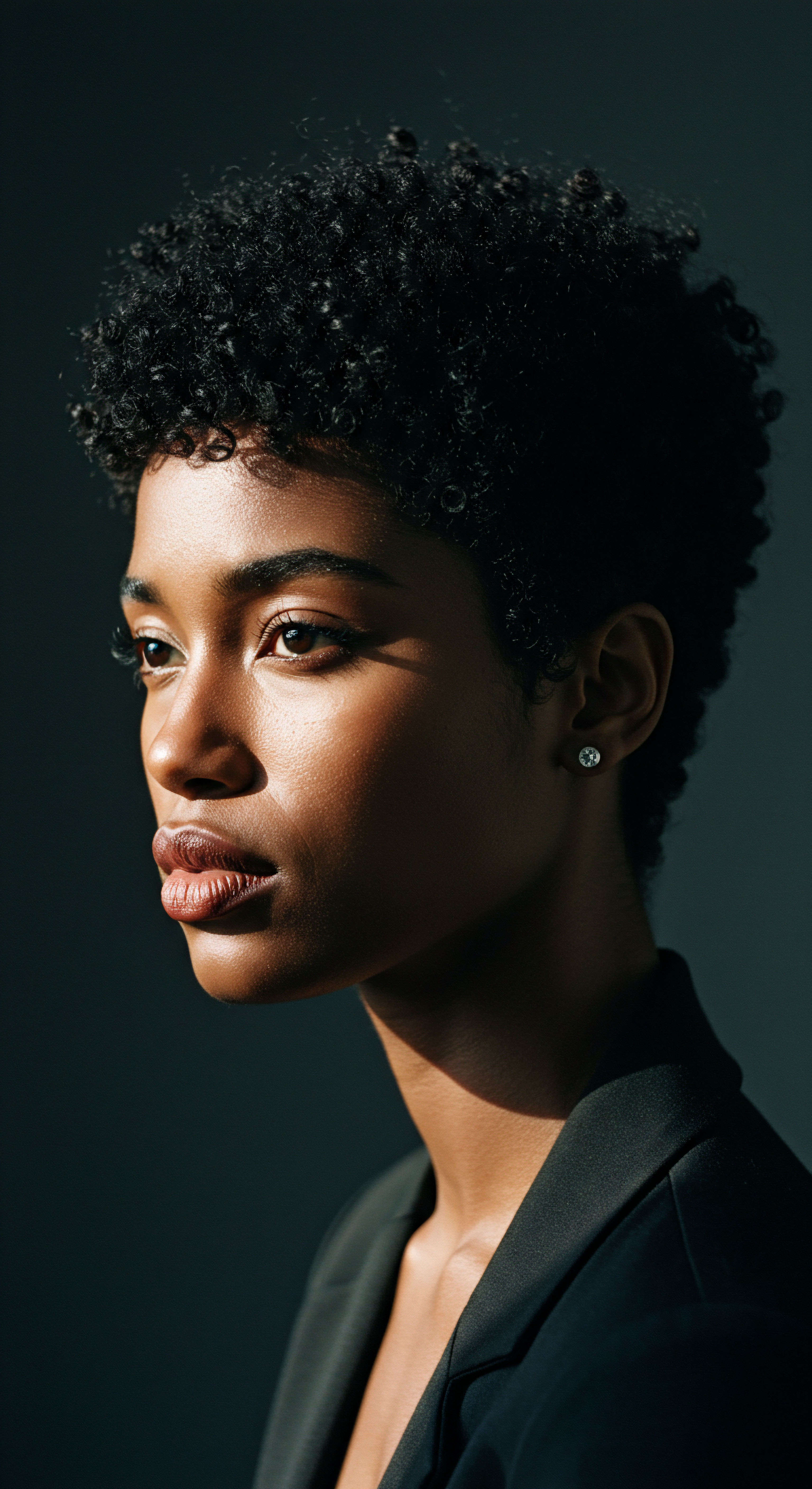
Reflection
The journey through the intricate relationship between European beauty standards and textured hair perception is a story of enduring influence, quiet resilience, and a powerful reclamation. It reveals how ideals, once narrowly defined, shaped not only outward appearance but also deeply personal narratives of identity and worth. Yet, within this complex history, there is a vibrant current of transformation. Each strand, each coil, each twist that is celebrated in its natural form today, is a testament to a growing understanding that beauty knows no single definition.
It is a gentle reminder that authenticity, rooted in self-acceptance and cultural reverence, holds a unique and enduring power, allowing individual radiance to shine without compromise. The quiet strength found in embracing one’s own hair is a profound step towards a world where every texture tells its own beautiful, unwritten story.
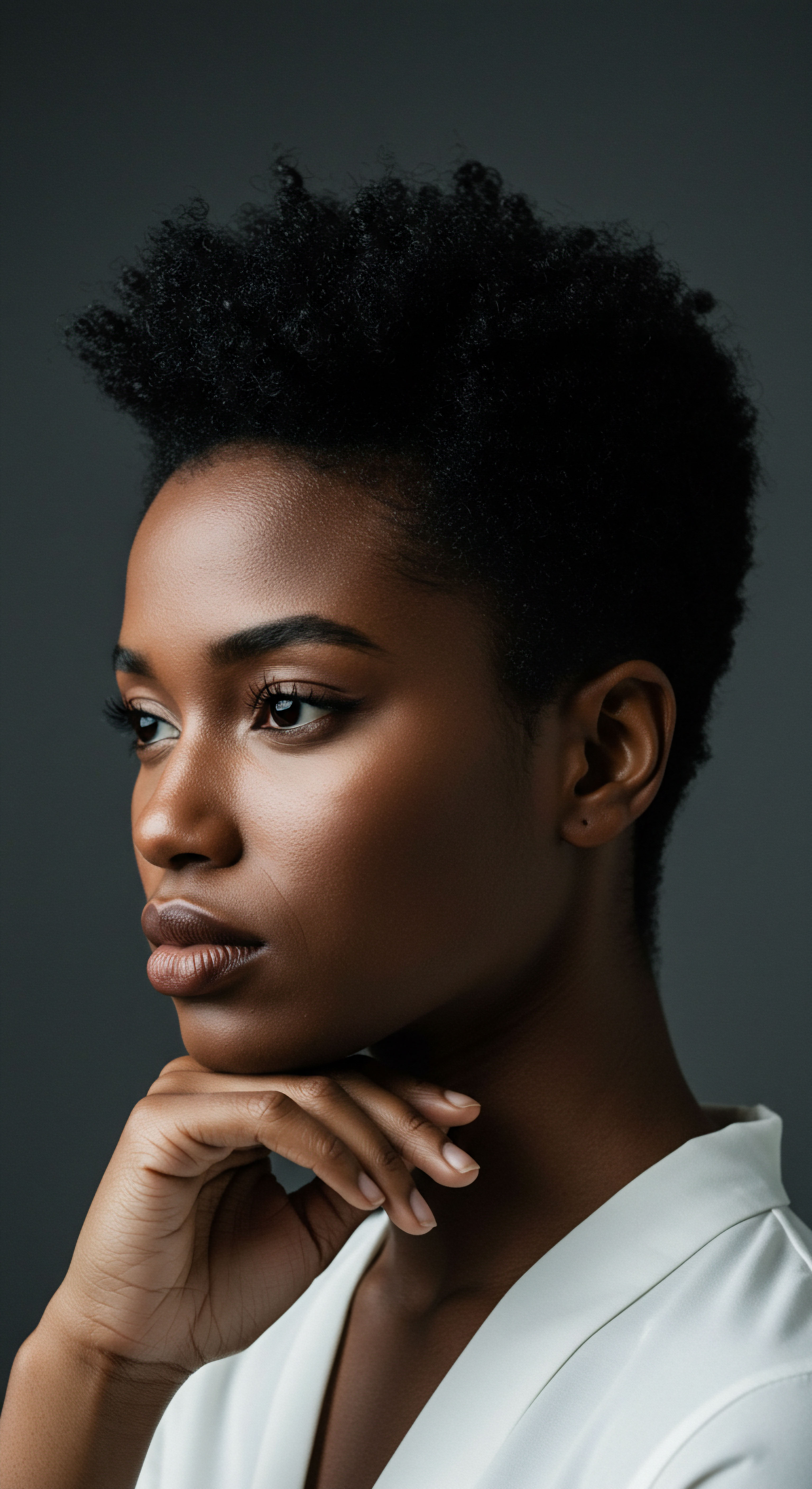
References
- Byrd, Ayana, and Lori Tharps. “Hair Story ❉ Untangling the Roots of Black Hair in America.” St. Martin’s Press, 2001.
- Banks, Ingrid. “Hair Matters ❉ Beauty, Power, and Black Women’s Consciousness.” New York University Press, 2000.
- Gaines, Alisha. “The Politics of Black Women’s Hair.” Ohio University Press, 2017.
- Hobbs, Tameka Bradley. “Styling Blackness ❉ The Social Politics of Black Women’s Hair.” University Press of Florida, 2019.
- Johns, G. Johns, A. & Bell, A. “The ‘Good Hair’ Study ❉ Explicit and Implicit Attitudes Toward Black Women’s Hair.” Duke University Fuqua School of Business, 2019.
- Massey, Lorraine. “The Curl Revolution ❉ Changing the Way We Think About Hair.” Workman Publishing Company, 2015.
- Peterson, Carla. “Pliant Bodies, Pliant Minds ❉ Colonialism and the Construction of Hair in the Americas.” University of Pennsylvania Press, 2008.
- Sherrow, Victoria. “Encyclopedia of Hair ❉ A Cultural History.” Greenwood Press, 2006.
- Smith, Kimberly W. “Beyond the Big Chop ❉ Hair, Culture, and Identity.” Routledge, 2021.